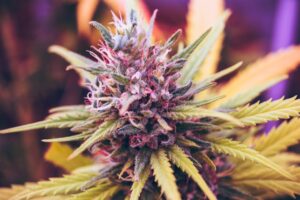For most users, vivid slang words describe their favorite cannabis plant. “Fire” has been the buzzword describing the very potent cannabis recently. This term refers to marijuana that contains high levels of THC, highly potent in its effects.
This usage of “fire” to describe cannabis depicts the evolving language of cannabis culture. It represents a very vibrant vocabulary of terms, such as “dank,” “chronic,” and “loud.” Such vocabularies aid users to convey quality and potency speedily and discreetly.
Knowing cannabis slang can be helpful in navigating dispensaries and conversations with other enthusiasts. When you hear someone mention “fire” weed, you can anticipate a product that packs a punch and likely commands a premium price.
Key Takeaways
- “Fire” is slang for highly potent cannabis with strong effects.
- Cannabis slang facilitates users’ ability to converse about quality and potency.
- Knowing these terms can add to your dispensary experience.
Understanding Cannabis Terminology
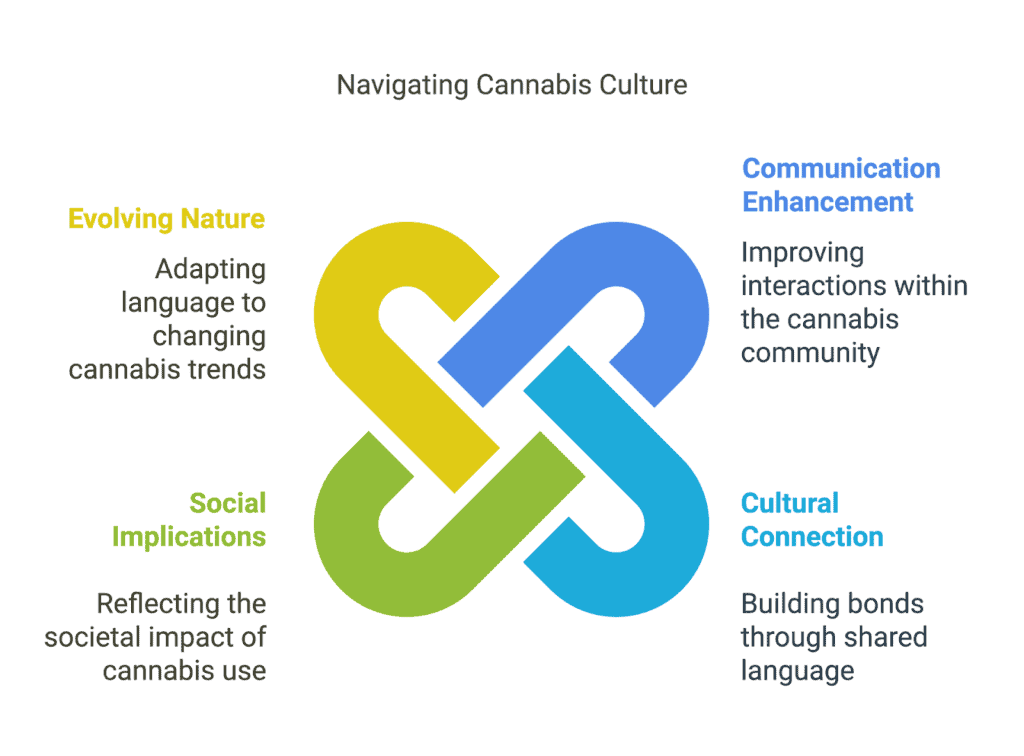
Cannabis has developed a rich vocabulary of slang terms over decades of use. Through the years, those words carry cultural meanings that reflect shifting attitudes about the plant. Language is reflective of cannabis subcultures as they evolve over time.
Origin of slang terms
There developed an entire argot to discreetly communicate about the plant. Many are derived from the jazz culture of the 1920s and 1930s. “Reefer” comes from Spanish “grifa,” while “marijuana” is a Mexican Spanish derivation.
In the 1960s, the counterculture put into popular speech such phrases as “pot” and “weed.” These circulated through music, movies, and underground newsletters. One refers to appearance, “grass” referring to green color.
Common Slang for Cannabis
You will find many slang terms for marijuana. “Herb,” “bud,” and “ganja” are common. “Chronic” refers to high-potency varieties. “Dank” refers to strong, high-quality marijuana with a strong smell.
There are regional differences. “Dagga” is used in South Africa, and “mota” is common in Mexico. Strain names like “OG Kush” or “Sour Diesel” are themselves slang terms, referring to specific varieties.
Changing Language in Cannabis Culture
Cannabis terminology is evolving. Legalization has brought new words to the table, such as “dispensary” and “budtender.” Social media is fast in spreading slang, with terms like “loud” becoming popular.
Medical cannabis use brings clinical language into common usage. Words like “cannabinoids” and “terpenes” are now part of enthusiast vocabulary.
As cannabis becomes mainstream, some of the slang fades. Older terms sound dated for younger users. New terms come into existence to name consumption methods, such as “dabbing” concentrates.
The Importance of Potency
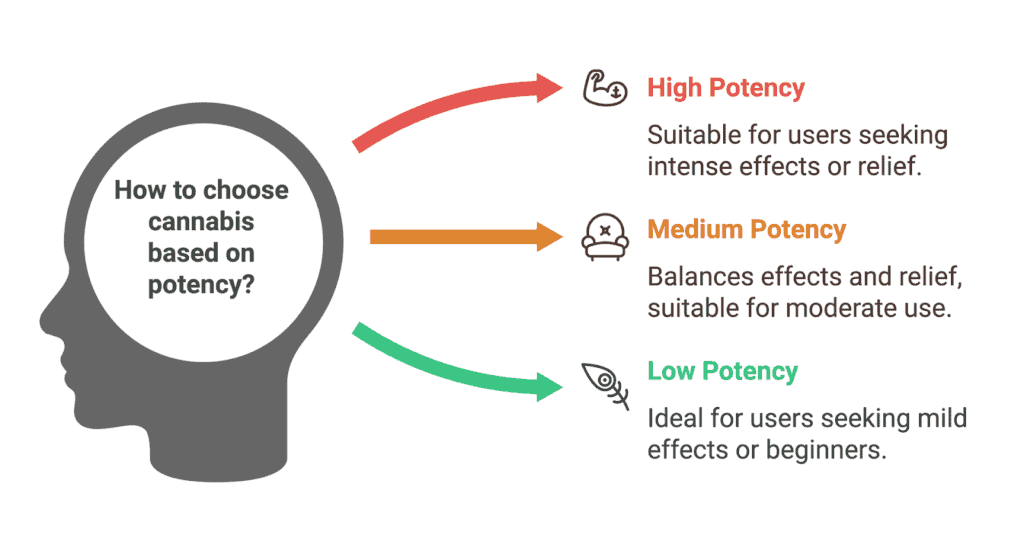
Potency represents a critical aspect of the experience of cannabis. It determines what strength and effects users could expect from different products.
Cannabis concentrates have much higher potency than flower. These products are created by extracting cannabinoids and terpenes from the plant material.
Some common types of concentrates include:
- Wax
- Shatter
- Live resin
- Resin
THC levels in concentrates can range from 60% to over 90%, compared to 15-25% in high-quality flower.
Concentrates are very potent, so use with caution. It is best to start slowly to determine how much you can tolerate.
Measuring the THC Levels
THC level is one of the benchmarks for measuring cannabis potency. Legally, cannabis products are already labeled with their THC levels.
- Low: 5-10% THC
- Medium: 10-15% THC
- High: 15-25% THC
- Extremely high: THC 25%
THC is not the only determinant of potency; however, other cannabinoids and terpenes also affect the result through the “entourage effect.”
Start with small amounts when trying a new strain or product. This will give you the chance to analyze its potency and effects safely.
Methods of Cannabis Consumption
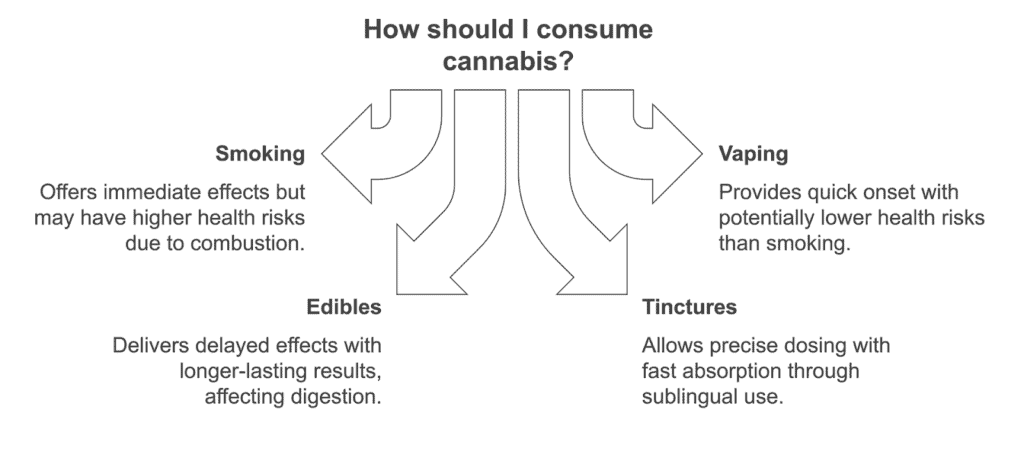
Cannabis users have several ways of consuming it; each method offers different experiences and effects. The type of method used can greatly influence the potency, onset time, and duration of effects.
Conventional Smoking
It is smoked more often than other preparations, with most of its users rolling flower into a joint or packing it into a pipe or bong. A pipe is a convenient way to smoke small amounts of marijuana easily and quickly. A bong, or water pipe, allows the smoke to pass through water, which can soften the harshness.
In just a few minutes, smoked cannabis likely penetrates the bloodstream, reaching a peak 1-3 hours later. Smoking tends to be a social process because users often share a joint or pipe among one another. Smoked cannabis produces strong odors and is irritating to your lungs.
Cannabis Concentrates and Dabbing
Concentrates are super-concentrated forms of cannabis with high levels of THC. Concentrates include wax, shatter, and oil. Dabbing is the most common method of using concentrates.
You apply a small amount of concentrate to a hot surface (nail) in a dab rig. Next, you inhale this vapor. This process takes place immediately and is so potent due to the presence of very high cannabinoid concentration.
The dabbing equipment is a bit specific; it may be too intimidating for inexperienced people. Begin with low doses since dabs are much stronger compared to flowers.
Other Forms of Administration
Vaporizing is the smokeless alternative to smoking. You heat cannabis flower or oil to release active compounds without combustion. This might irritate the respiratory system less than smoking.
Edibles are smokeless alternatives. Cannabis-infused foods and drinks will have effects that last hours, but dosing is tricky. Effects may take 30-90 minutes to onset and last 4-8 hours.
Tinctures and sublingual sprays can be dosed precisely. You put drops under your tongue so that they are absorbed rapidly. Topicals, like creams and balms, are applied to the skin for localized effects without psychoactive impact.
Cannabis Cultural Influences
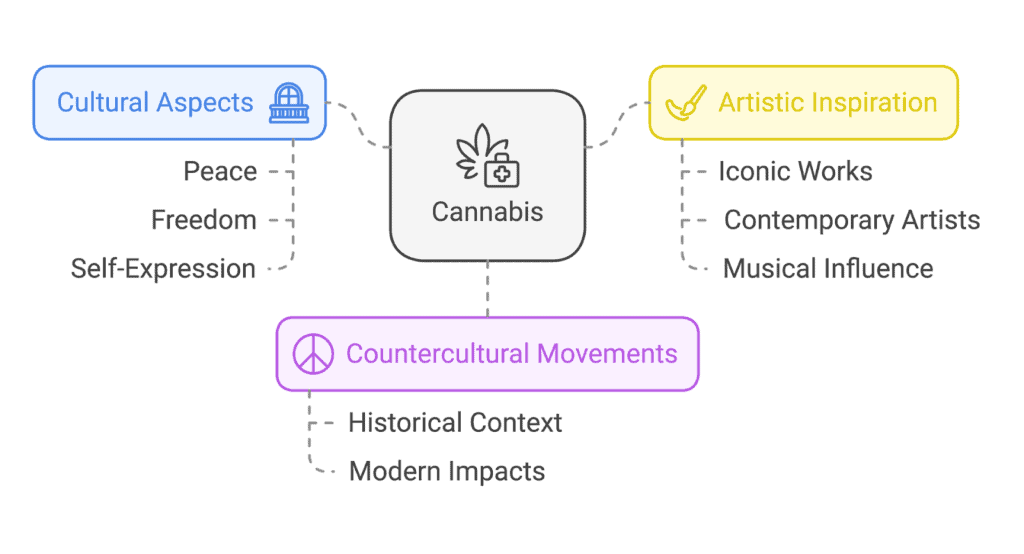
The slang of cannabis, such as “fire,” has shaped global culture, art, and spiritual practices. You will find its impact reaches far beyond casual use to influence music, film, and even religious rituals.
Global Impact on Slang Development
Cannabis terminology varies widely between cultures. You will frequently hear “fire” in English-speaking countries, while Spanish speakers might use “de guaya” to imply strong weed. In India, “charas” means handmade hashish from the Hindu Kush mountain range.
The cannabis industry has coined phrases like “eighth” to refer to 3.5 grams. The term “chronic” would be used quite often for good-quality cannabis. There are regional differences, but “peng” is pretty common in the UK, while “hintern” is in Germany.
Rastafarian and Religious Associations
The Rastafarian culture views cannabis as a sacrament. It is used in religious ceremonies, often referred to as “wisdom weed” or “holy herb.” Rastas believe that cannabis brings them closer to Jah (God).
Some Hindu sects regard cannabis as a gift conferred upon them by god Shiva. You will find them using it during festivals like Holi and Shivratri. Ancient Chinese texts mentioned cannabis as a medicinal plant imbued with spiritual powers.
A new generation of cannabis churches has emerged in the U.S. There’s the THC Ministries that uses cannabis as part of its religious exercise, advocating religious freedom protection.
Frequently Asked Questions
What are some slang words for good-quality cannabis?
“Fire” is one of the common slang words that is used to describe strong cannabis. Other common slang words include “dank,” “loud,” “chronic,” and “top-shelf.” These words typically mean it is good-quality, strong marijuana.
How does it affect you?
There might be very potent cannabis that causes extreme euphoria, increased perception of senses, and helps in deep relaxation. Time perception may alter, and there can be increased appetite. Anxiety or paranoia can occur with strong strains, mainly with high doses.
How does THC content relate to the potency of cannabis?
The THC content is directly proportional to cannabis potency. The higher the percentage of THC, generally, the stronger the effects are. Most commercial strains run between 15% and 25% THC; some can reach 30% or more. Incremental increases in THC do make a difference in overall potency.
What are some safety tips for consuming high-potency cannabis strains?
Start with a low dose; wait for the effects before consuming another dose. Prepare the area in advance of consumption for comfort and safety. Stay hydrated and snack. Do not mix with alcohol or any other substances. Do not operate heavy machinery, etc., under its influence.








